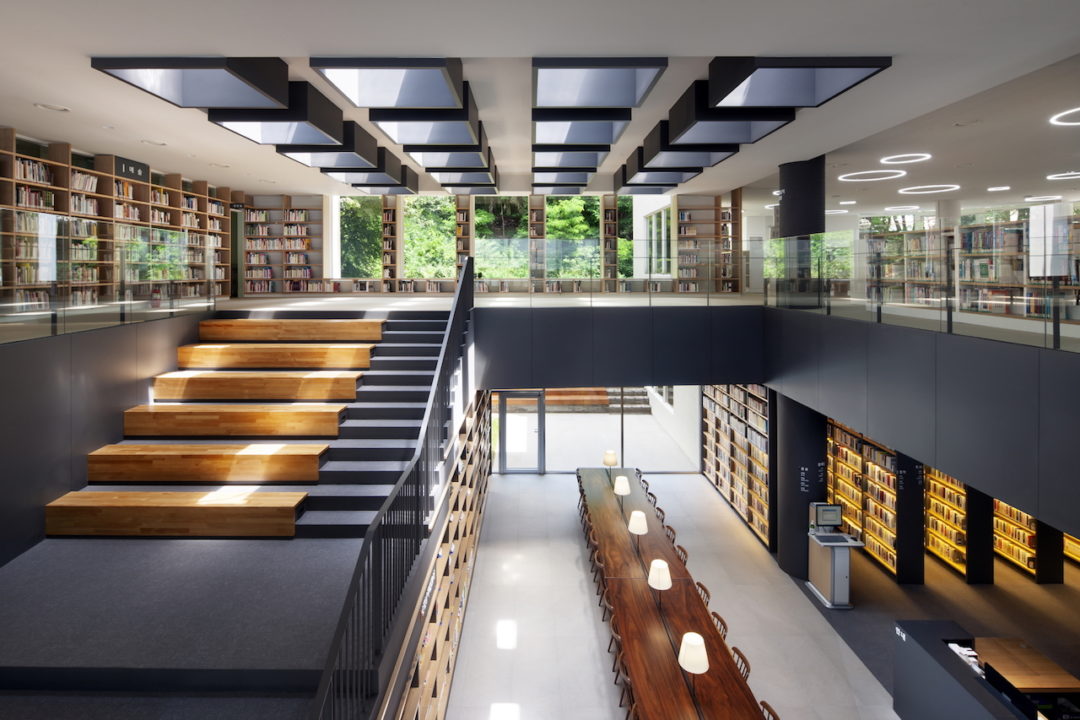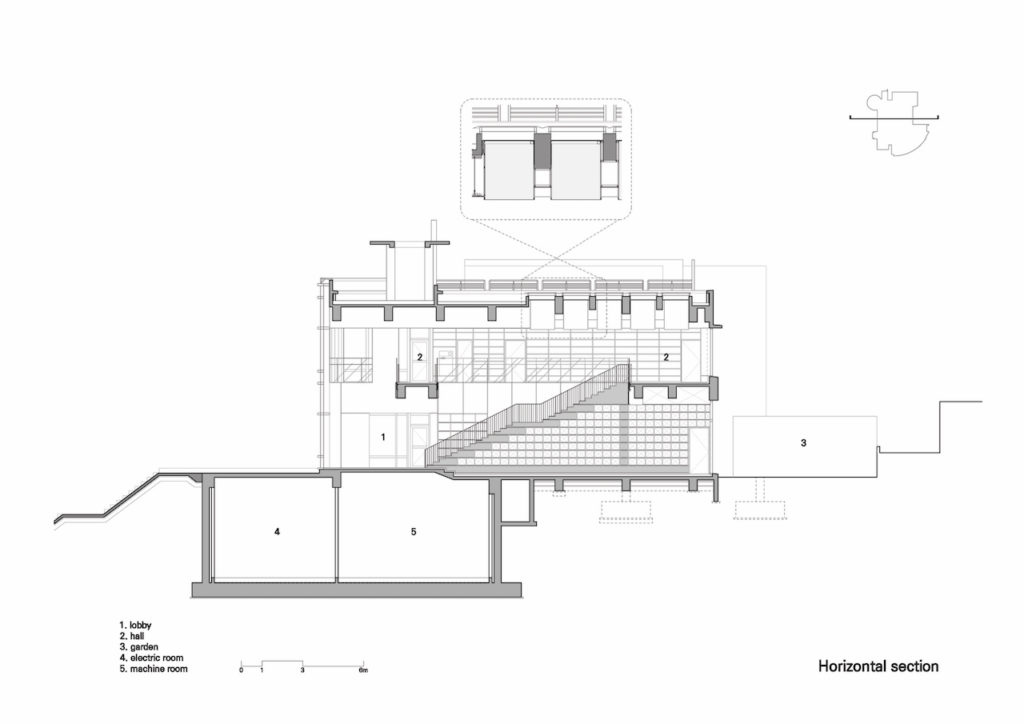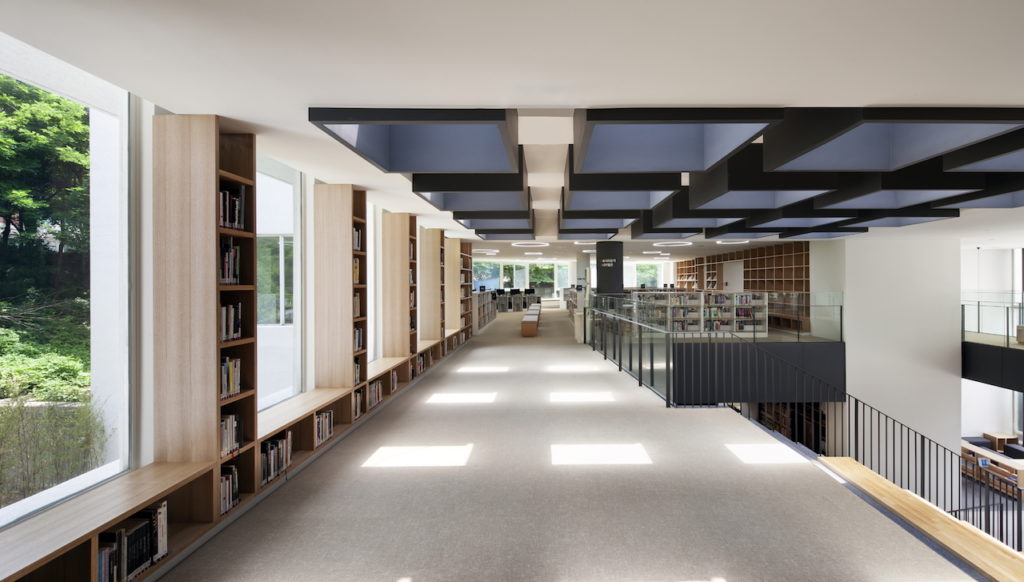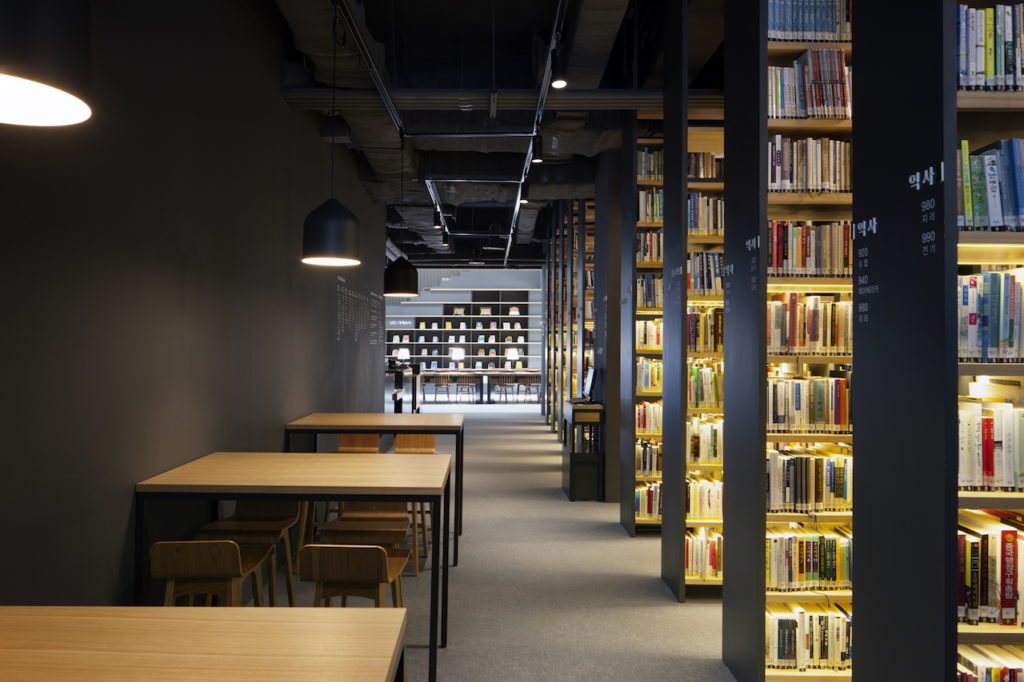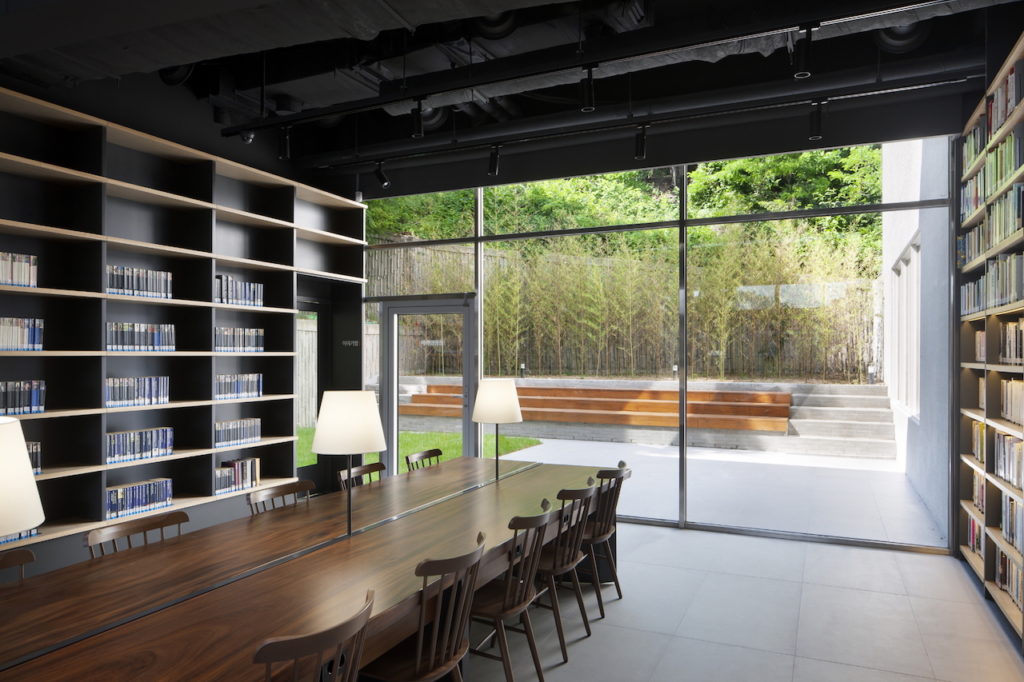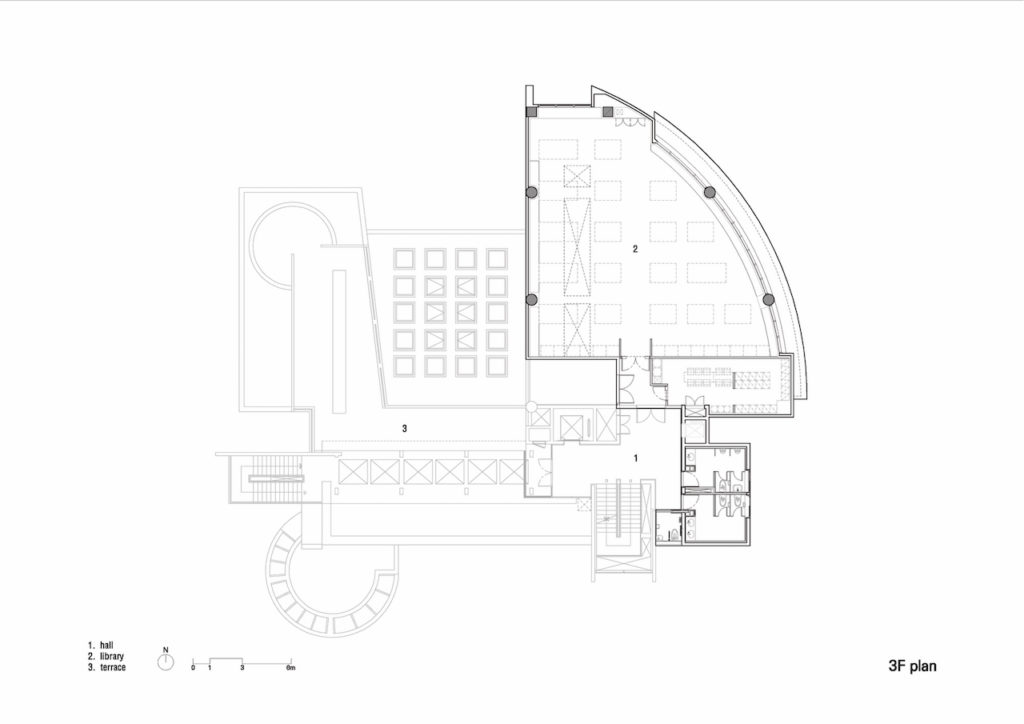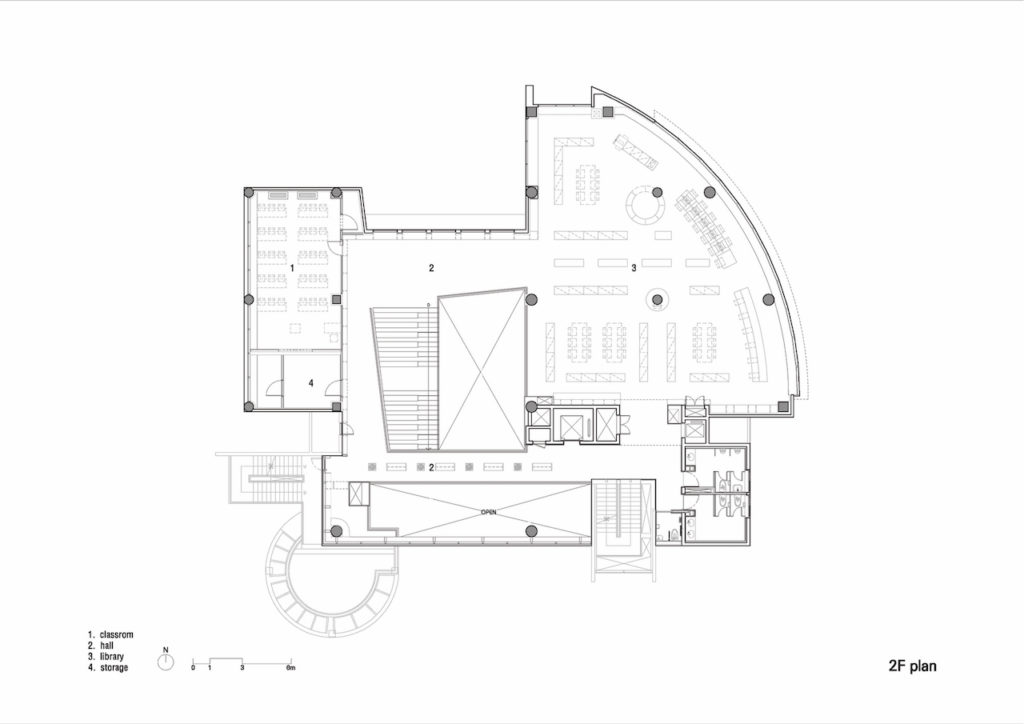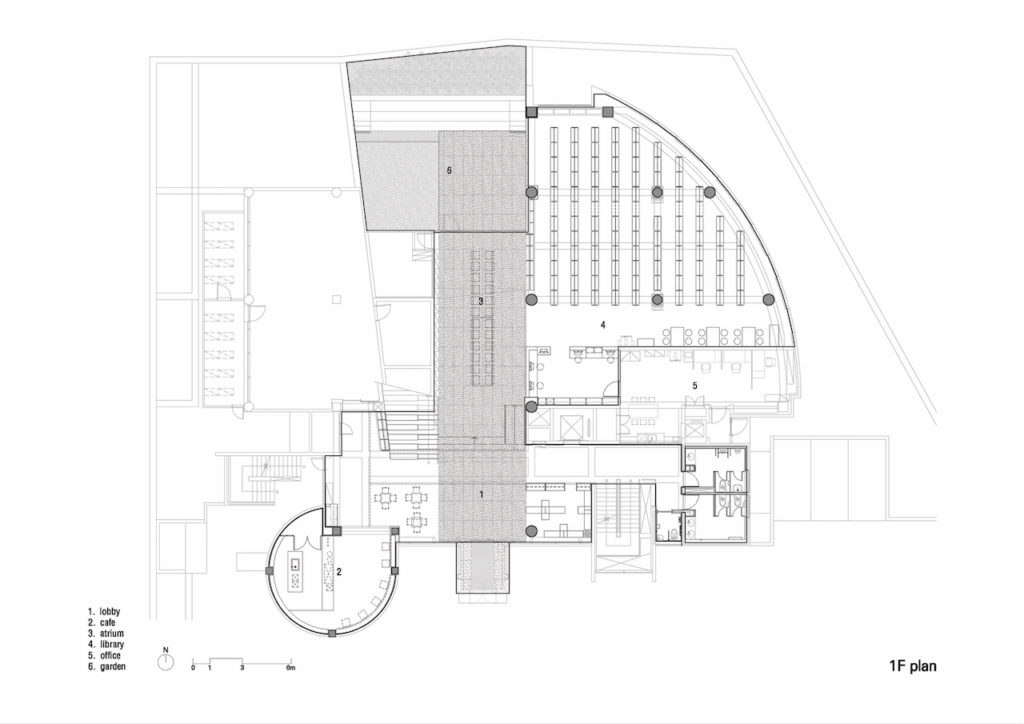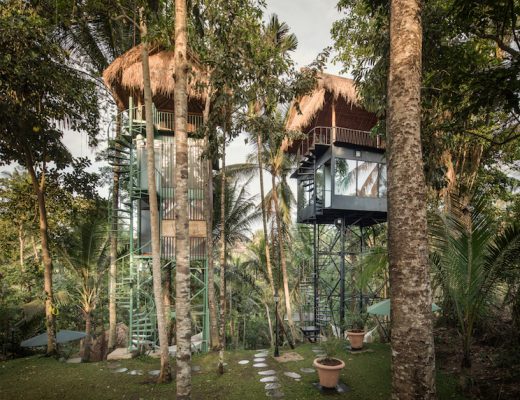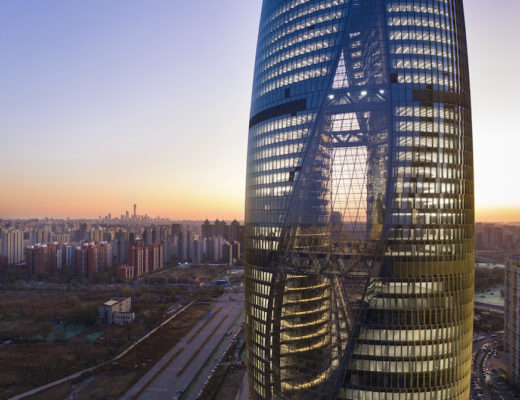When D.Lim Architects was first approached to work on the remodeling of Doksan Library, the team’s instinct was to turn it down. But it changed when the team visited the site. The barebones of the Doksan Library, located southwest of the Han River in Seoul, turned out to form the perfect candidate for a remodeling project. The small library was in possession of a spacious central atrium, with 16 skylights piercing the ceiling above.

A wide-set staircase continued from the lobby to the second floor, with neighbouring forests dipping into view through the large surrounding windows. While this description was more fitting for the potential of the project perceived by the architect, or even as an estimate of the original design intended by its original architect. The reality on-site was completely different. Two decades following its construction, the atrium had become full of books, with the garden beyond obstructed by yet another storage space turned shipping container.

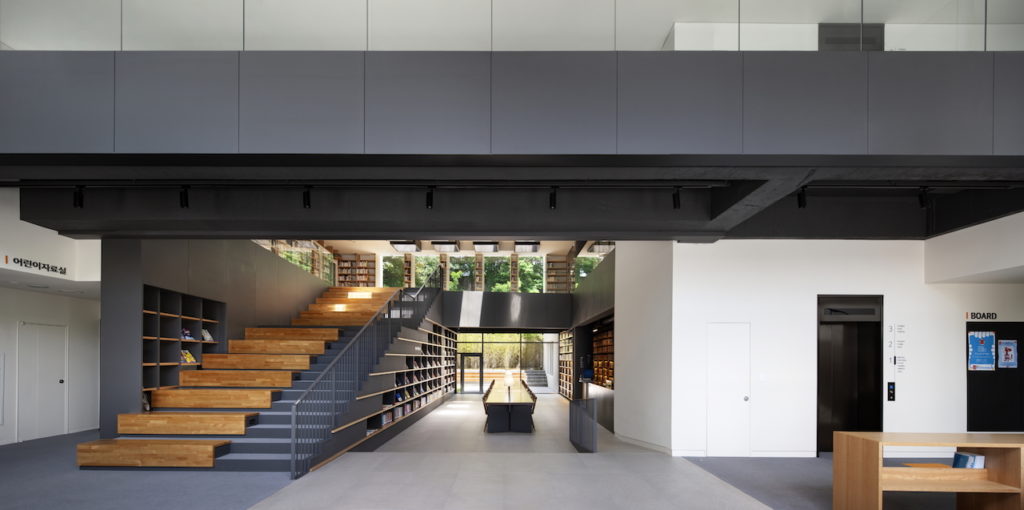
The lack of light indoors led to a pervasive sense of gloom, not to mention the palpable absence of views of the forest. A connecting bridge impeded the intended line of sight from the main entrance, while a disorderly circulation complicated fluidity between the book storage spaces and reading rooms.
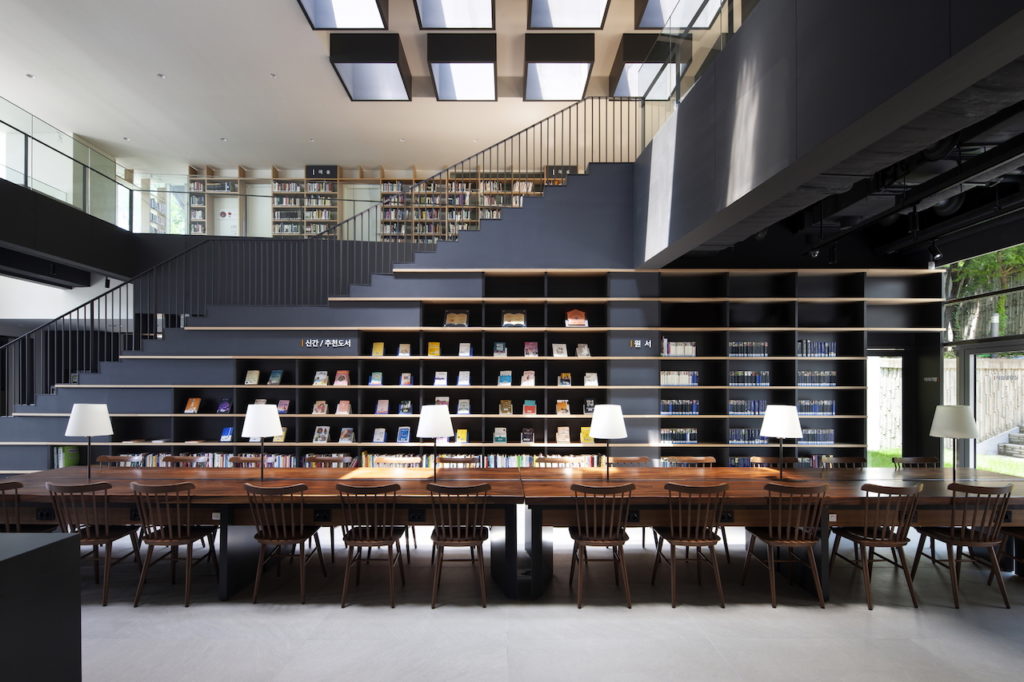
The remodeling process was simple. The architects recovered the original design concept behind the library and wiped away any of the dingier traces of aging. First, everything that obstructed the line of sight from the main entrance to the garden was removed. The lower ceiling of the connecting bridge – an impediment to the view upon entering the library – was dismantled, and the utilities and piping were relocated elsewhere.
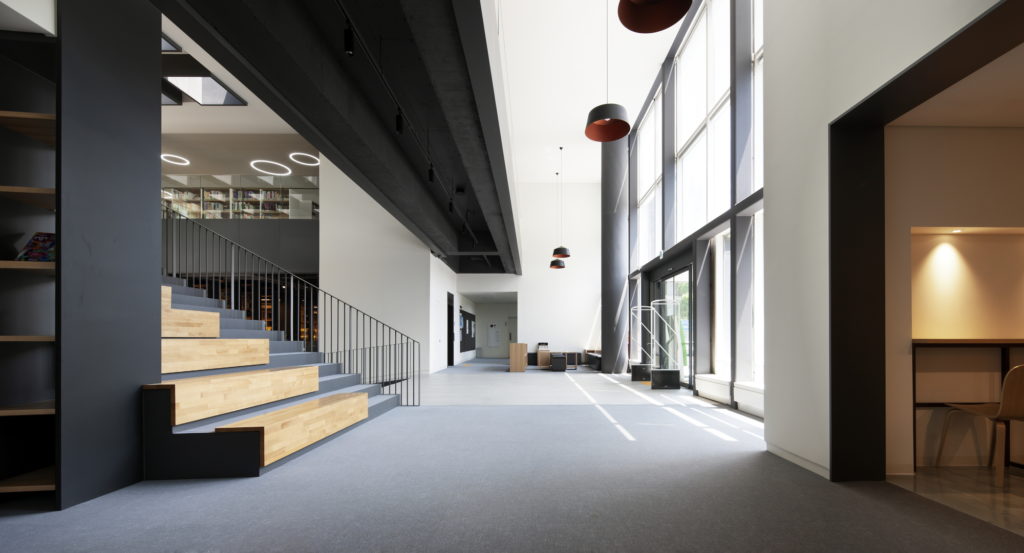
The once stuffy entrance is now equipped with an approximately 1 m-tall vertical void. The bookshelves crowding the atrium were cleared away and the shipping containers in the garden were dismantled. Finally, a single clear space connected the main entrance to the hill backing the site, and scenes of the forest begun to emerge into direct view.

The next step was to relocate the books removed from this emptied-out space. This called for a strategy that would maximise the efficiency of the space using the same surface area. Adopting a particularly languorous axis defined from the front to back of the library moving through the central atrium, 10-shelf high bookcases were installed for book storage on the inner chamber of the first floor composing an extremely compact and tight-fitting space. Then, a more loosely established vertical space was inserted to connect the first and second floors, with the latter housing a relatively more relaxed space than the former.
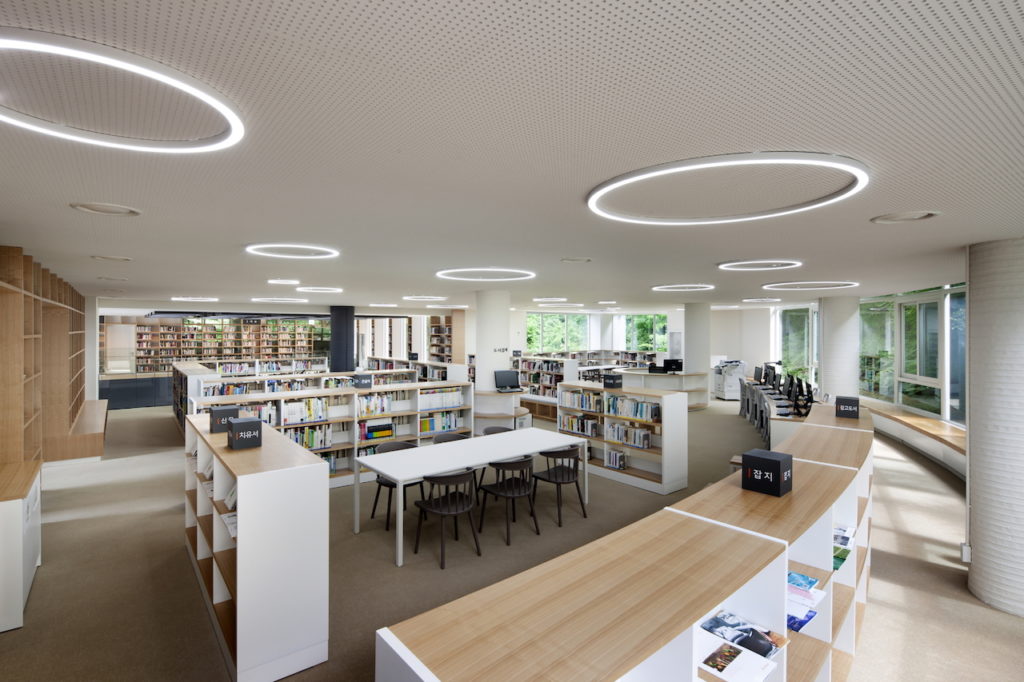
Re-establishing the spatial hierarchy through contrasting densities allowed the team to restore the original function of the small library as a convivial meeting place for locals, as well as to open up the space through a more fluid circulation. The once dark and stuffy second-floor reading rooms now feature broad window views of the forests, resuscitating a once obstructed space, as the library began to resonate with its surroundings. Two 6m-long wooden tables were placed lengthwise in the now bookcase-free atrium.

The architects’ hoped that this small neighbourhood library would have at least one open space for leisure activities. The 16 skylights above the tables were accentuated by a series of prominent square frames, with indirect lighting installed to softly illuminate the tables in the evening. A bookcase was placed to the side of the wide staircase leading to the second floor, transforming the space as a place to read, and small personal spaces were installed alongside each of the windows on the second floor.

These spaces – both dark and bright, full and empty, compact and open, each finished in tones of dark grey or luminous white – partition this library into a composition of binary oppositions. However, just like the dichotomy of life and death, these binaries amplify the impact of each of these spaces in this small library.
Project details:
Architects: D.LIM architects Area: 2,203m²
Design team: Jisoo Yoon, Soohyun Park
Year of completion: 2020
Photographs: Youngchae Park
Manufacturers: AutoDesk, Colux, ECLAT, Incobps, Kukje Art, Trimble NavigationLead architects: Yeonghwan Lim, Sunhyun Kim
Design team: Jisoo Yoon, Soohyun Park
Clients: Geum cheon-gu
Engineering: Yousungeng
City: Geumcheon-gu
Country: South Korea
See the full image gallery here:
You might also like:
D.LIM Architects designs boxy South Korean wellness centre in mountainous wilderness
SHAU architects designs elevated community library in Indonesia’s central Java using local wood

